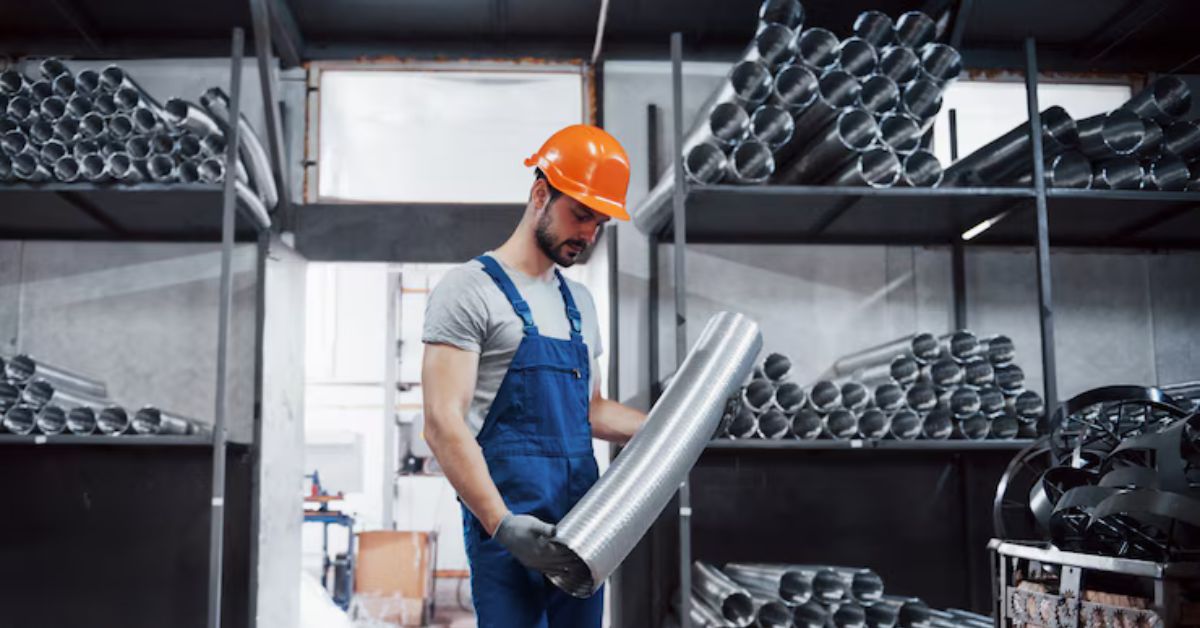Blogs
A Complete Guide to Tubing Material Selection in Industrial Applications

Tubing plays a crucial role in various industries. From construction to manufacturing and beyond, you’ll notice tubes serving as conduits for a wide variety of fluids and gases. The good news is that there is a tubing material appropriate for every application, no matter how specialized. Discover what you need to know about industrial tubing materials and their applications below.
What to Consider When Choosing a Tubing Material
There are three primary concerns to consider when selecting from the available industrial-grade tubing options. You should consider the environmental conditions, physical requirements, and industry standards.
Environmental Conditions
Will the tubing be used indoors or outdoors, where it is exposed to UV light? What is the expected temperature range for the area around the tubing? Will it be used in a wet or humid environment? These are all vital questions to answer before deciding on a tubing option.
Wet and humid conditions necessitate a corrosion-resistant material, such as stainless steel or plastic. Metals perform better in extreme heat and cold than rubber or plastic. Outdoors, you’ll need a UV-resistant material. Taking the environment into consideration means you’ll wind up with durable tubing options that will last as long as possible without sustaining unnecessary damage.
Physical Requirements
Next, consider the physical requirements of the application. Will the tubing be subject to movement, or will it remain static? Is it a high-pressure application?
If you need flexible tubing to accommodate movement, rubber or silicone are good choices. For high-pressure applications, a strong material like stainless steel or a plastic composite is the best choice.
Industry Standards
Every industry has its own set of standards to follow. In the food and beverage industry, the FDA regulates the types of materials that can be used to transport liquids intended for human consumption, limiting options to plastics and certain types of stainless steel. Other industries have different requirements and standards.
Popular Industrial Tubing Materials
Once you know what characteristics to look for, it’s time to evaluate specific tubing materials. Here are a few of the most popular of them:
1. Stainless Steel
Stainless steel is a strong, durable, and corrosion-resistant material. It can withstand extreme heat and cold and is unlikely to leach chemicals into fluids. Stainless steel tubing is ideal for the food and beverage industry, pharmaceutical manufacturing, medical devices, and oil and gas extraction.
2. Copper
Copper is highly thermally conductive, naturally antimicrobial, and extremely ductile. It’s also resistant to corrosion in most situations. Copper tubing can be rigid or flexible. Depending on the type of tubing, it’s used in plumbing, gas delivery, heating systems, air conditioners, refrigeration units, and other applications.
3. Aluminum
Aluminum is corrosion-resistant and offers high conductivity. It’s also lightweight and easy to bend and shape, making it ideal for hydraulic systems, framing construction, and the automotive and aerospace industries. Aluminum is a top choice for any application where weight is a crucial factor.
4. Plastic
Plastic and plastic composites are versatile tubing materials. PVC is chemically resistant and is often used in residential plumbing and medical tubing applications. PTFE provides exceptional chemical resistance, but there is some debate surrounding its potential environmental impacts. Nylon is strong, abrasion-resistant, and features a high-pressure rating. It’s used for fuel and chemical transfer lines and in pneumatic systems.
5. Rubber
Rubber is one of the most flexible materials available for tubing. It’s used for automotive fuel lines, cooling systems, and, in the case of silicone rubber, diverse food and medical applications.
How to Choose the Right Material
Choosing the right industrial tubing material requires consideration of environmental conditions, physical requirements, and industry standards. Determining the specific application first will help you narrow down options. From there, you can contact tubing suppliers to discuss options in further depth.
